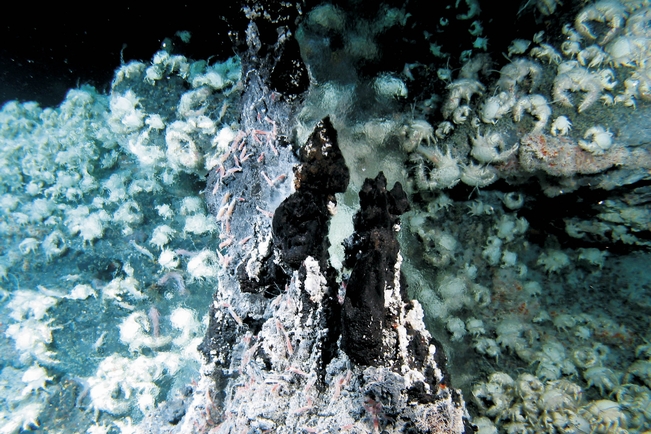
Highly concentrated “gold”: Successfully extracted from the deep sea
-Collected from the deep sea off the coast of Aogashima-
-Gold vein hidden in the deep sea of Japan-
We will provide you with a summary of articles published on NHK.

Japan Agency for Marine-Earth Science and Technology
A research group collected deep-sea hydrothermal fluid off the coast of Aogashima, Tokyo.
Successfully recovered highly concentrated gold by adsorbing it onto a special sheet.
Why Aogashima? How to collect? And what about commercialization potential? Detailed explanation.

Off the coast of Aogashima, Tokyo
At a depth of 700 meters, there are hydrothermal vents that spew out hot water at a temperature of about 270 degrees.
It was discovered that the surrounding rocks contained high concentrations of gold.

Japan Agency for Marine-Earth Science and Technology
Machine manufacturer IHI
The research group developed a sheet made from special algae that adsorbs gold.
Gold is recovered from this hot water using a special algae sheet.
research group
In August 2021, this sheet was installed around a hydrothermal vent off the coast of Aogashima.
After two years, it was withdrawn in June of this year.

Adsorbs high concentration of gold
As a result of the analysis, the sheet adsorbed up to approximately 20ppm = 20 grams of gold per ton.
This is approximately five times the gold concentration in the world’s major gold mines.
Also adsorbs high concentrations of silver
Silver was also adsorbed at a maximum concentration of approximately 7,000 ppm, more than 300 times that of gold.
“Gold” contained in deep sea hot water
This is the first time in the world that we have succeeded in collecting algae by adsorbing it to a sheet of algae.

JAMSTEC: Tatsuo Nozaki, Chief Researcher
They succeeded in adsorbing more gold than expected. It was unexpected and surprising that silver was adsorbed.
Use of this technology:
1. It can also be applied to areas other than hot water, such as hot springs and sewage.
2. This could be a new way to extract gold.

Why Aogashima?
University of Tokyo research team
In 2015, 700m deep under the sea off the coast of Aogashima, 400km south of Tokyo.
Discovered a “hydrothermal vent” that spews out high-temperature hot water.
The collected rock contains 17ppm (=17g per ton).
How to collect:
It is a type of primitive algae called cyanobacteria.
The key is ‘blue-green algae that only grows in hot spring areas in Tohoku.’

HI: Yasuyuki Fukushima Senior Researcher
“Gold” dissolved in hot water:
It exists in the form of a compound called “gold chloride” when combined with chloride ions.
By using this ’blue-green algae,’ the bond between ’gold’ and ’chloride ions’’ is first broken.

“Algae” that adsorbs gold:
”Algae” that adsorbs gold is being cultivated in Yokohama City.
1. “Gold” is charged with positive electricity.
2. “Algae” is charged with negative electricity.
They will be strongly attracted to each other.
Heating at a high temperature of 1000 degrees:
The “algae” will burn out and only the “gold” can be extracted.
By processing it into a sheet and exposing it to light, the adsorption efficiency of gold increased.

Collecting “gold” from hot springs:
The research group has already succeeded in recovering gold from hot springs on land using the same method.
In the future, tests will be conducted to see if gold can be recovered from urban sewage and mine wastewater.
How to mine gold:
Overseas, toxic chemicals such as mercury are used. Environmental pollution and the effects on the human body are serious.
The method using algae sheets can help solve these problems.
https://www3.nhk.or.jp/news/html/20231019/k10014230081000.html